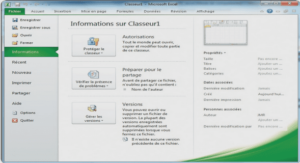Human IL-1β/IL-1F2 Immunoassay
PRINCIPLE OF THE ASSAY
This assay employs the quantitative sandwich enzyme immunoassay technique. A monoclonal antibody specific for human IL-1β has been pre-coated onto a microplate. Standards and samples are pipetted into the wells and any IL-1β present is bound by the immobilized antibody. After washing away any unbound substances, an enzyme-linked polyclonal antibody specific for human IL-1β is added to the wells. Following a wash to remove any unbound antibody-enzyme reagent, a substrate solution is added to the wells and color develops in proportion to the amount of IL-1β bound in the initial step. The color development is stopped and the intensity of the color is measured.
LIMITATIONS OF THE PROCEDURE
FOR RESEARCH USE ONLY. NOT FOR USE IN DIAGNOSTIC PROCEDURES
• The kit should not be used beyond the expiration date on the kit label. • Do not mix or substitute reagents with those from other lots or sources. • It is important that the Calibrator Diluent selected for the standard curve be consistent with the samples being assayed. • If samples generate values higher than the highest standard, dilute the samples with the appropriate Calibrator Diluent and repeat the assay. • Any variation in standard diluent, operator, pipetting technique, washing technique, incubation time or temperature, and kit age can cause variation in binding. • Variations in sample collection, processing, and storage may cause sample value differences. • This assay is designed to eliminate interference by other factors present in biological samples. Until all factors have been tested in the Quantikine Immunoassay, the possibility of interference cannot be excluded.
TECHNICAL HINTS
When mixing or reconstituting protein solutions, always avoid foaming. • To avoid cross-contamination, change pipette tips between additions of each standard level, between sample additions, and between reagent additions. Also, use separate reservoirs for each reagent. • To ensure accurate results, proper adhesion of plate sealers during incubation steps is necessary. • When using an automated plate washer, adding a 30 second soak period following the addition of Wash Buffer, and/or rotating the plate 180 degrees between wash steps may improve assay precision. • Substrate Solution should remain colorless until added to the plate. Keep Substrate Solution protected from light. Substrate Solution should change from colorless to gradations of blue. • Stop Solution should be added to the plate in the same order as the Substrate Solution. The color developed in the wells will turn from blue to yellow upon addition of the Stop Solution. Wells that are green in color indicate that the Stop Solution has not mixed thoroughly with the Substrate Solution.





